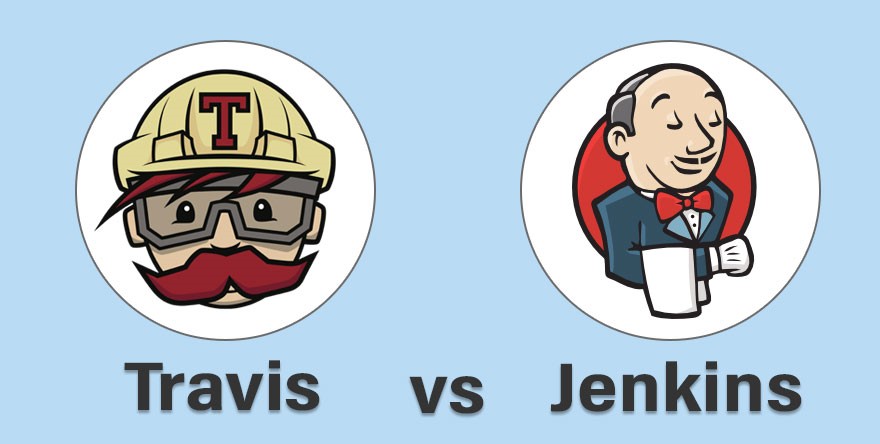Jenkins Vs Travis CI
Continuous Integration (CI) is a vital practice in modern software development, ensuring that code changes are regularly and automatically built, tested, and integrated into a shared repository. Jenkins and Travis CI are two widely used tools in the CI landscape, each offering unique features and capabilities. In this blog post, we will compare Jenkins and Travis CI, highlighting their differences and similarities, to help you make an informed decision on which tool to choose for your CI needs.
Jenkins: The Flexible Automation Server
Jenkins is a popular open-source automation server known for its flexibility and extensive plugin ecosystem. It has been around for over a decade and has a strong community support. Jenkins provides a wide range of features and customization options, making it suitable for complex CI workflows.
Key Features of Jenkins
- Extensibility: Jenkins offers a vast collection of plugins, allowing you to integrate with various tools, languages, and platforms. This extensibility enables you to tailor your CI workflows to fit your specific project requirements.
- Distributed Builds: Jenkins supports distributed builds, allowing you to distribute build and test tasks across multiple machines. This capability enhances scalability and reduces build times.
- Pipeline as Code: Jenkins supports the concept of “Pipeline as Code,” enabling you to define and version your CI pipelines using code. This approach provides flexibility, reusability, and ease of maintenance.
- Community Support: Jenkins has a large and active community that continuously develops and maintains plugins, providing regular updates and support.
Travis CI: The Cloud-Based CI Platform
Travis CI is a cloud-based CI platform that simplifies the process of setting up and running CI workflows. It is designed to be easy to use, requiring minimal configuration, and is well-suited for projects hosted on popular version control systems like GitHub.
Key Features of Travis CI
- Ease of Setup: Travis CI provides a straightforward setup process, particularly for projects hosted on GitHub. It automatically detects and configures the CI workflow based on the project’s language and framework, reducing the setup time.
- Integration with GitHub: Travis CI integrates seamlessly with GitHub, providing easy access to repositories, branches, and pull requests. It can automatically trigger CI builds on specific events, such as pushing changes or creating pull requests.
- Simple Configuration: Travis CI uses a YAML-based configuration file to define the CI workflow. The configuration file specifies the required environment, dependencies, and commands, making it easy to manage and version.
- Cloud-Based Infrastructure: Travis CI provides a scalable and distributed infrastructure, allowing concurrent builds across multiple virtual machines. This scalability ensures fast build times, even for projects with large test suites.
Jenkins vs. Travis CI: Choosing the Right Tool
When deciding between Jenkins and Travis CI for your CI needs, consider the following factors:
- Scalability: If you require scalability for concurrent builds and faster execution times, Travis CI’s cloud-based infrastructure offers an advantage. Jenkins can also scale, but it may require more manual configuration and setup.
- Flexibility and Customization: Jenkins excels in providing flexibility and extensive customization options through its plugin ecosystem and “Pipeline as Code” approach. If your project has complex CI requirements or relies on specific integrations, Jenkins may be a better choice.
- Ease of Setup: Travis CI shines in its ease of setup, especially for projects hosted on GitHub. It automates much of the configuration process, making it a great option for smaller projects or teams seeking a quick setup.
- Community and Ecosystem: Jenkins has a robust and active community with a vast array of plugins and integrations. This community support can be beneficial when seeking solutions to specific problems or accessing additional functionality.
Jenkins and Travis CI are both powerful tools for implementing Continuous Integration in your software development process. Jenkins offers flexibility, customization, and extensive plugin support, making it suitable for complex CI workflows. Travis CI, on the other hand, provides a cloud-based, easy-to-use solution with seamless integration with GitHub. Consider the scalability needs, customization requirements, ease of setup, and community support when choosing between the two tools. Ultimately, the right choice depends on the specific needs of your project and the preferences of your development team.









